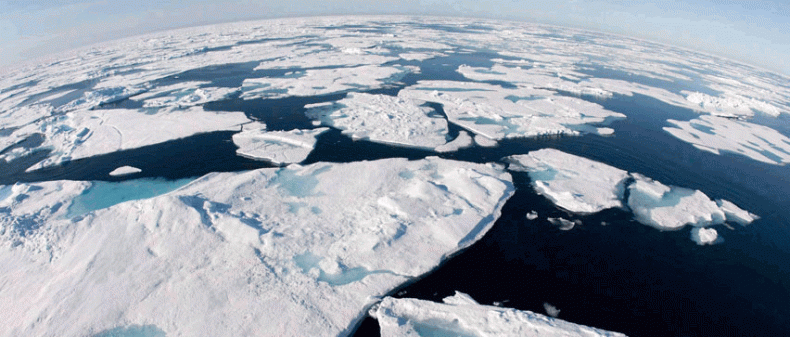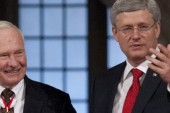
This is the fourth in a series of five articles focusing on the experience of a Canadian counter-terrorism analyst at a NATO seminar in Denmark, to discuss the future of national security and how NATO intends to respond to emerging threats around the world.
This briefing focuses on one of the most important emerging challenges for Canada in the 21st century, the Arctic Circle. After summarizing key points, this briefing will outline the challenges we are facing for the future of our northern hemisphere.
Overview
Although it is a massive area overlapping the nautical borders of several states, the Arctic is also a highly regulated area making legal and political questions simpler than expected.
For starters, the Arctic Circle is a sea surrounded by a landmass (not vice-versa) and is thus regulated by UN Laws of the Sea (UNCLOS). Under international law, this means that all states own up to 200 nautical miles off their own coasts. Thus, Canada owns the fish, minerals, oil and gas within 200 nautical miles of its northernmost landmass. In addition, states can claim an extra 150 miles if they can scientifically prove that the seabed is connected to the continental slope within their own 200 nautical mile range.
According to a US geological survey, the Arctic region holds about a fourth of the world’s undiscovered oil and natural gas, 84% of which lies beneath the ocean floor. Oil companies already involved in the region include: ConocoPhillips, Statoil, ExxonMobil, BP, Imperial Oil, Chevron and Royal Dutch Shell. You can bet that each state will be claiming every inch of that extra 150.
Second, in an effort to avoid political tensions, each country in the area founded and joined the Arctic Council in 1996 to establish a forum where issues can be discussed and resolved. This Council is made up of eight members: Canada, US, Norway, Denmark, Russia, Iceland, Sweden and Finland but has both permanent and ad-hoc observer states that include France, Great Britain, Germany, China and several others.
For the eight member states, each country is obligated to submit its claim in the Arctic within 10 years of ratifying UNCLOS. (Canada ratified UNCLOS in 2003 and will be submitting its claim next year). This ensures that each state acknowledges the framework and is bound by international law to resolve any disputes through the forum.
Third, as the ice caps continue to melt, the Arctic takes on a whole new meaning: Transit.
Roughly 90% of the world’s trade is conducted via sea routes. Commercial shipping routinely transit goods from east to west by using a few key waterways such as the: Suez Canal, Panama Canal, Straits of Malacca or the Gulf of Aden.
Challenges
There are several issues that have arisen in Canada’s northern hemisphere that have complicated the framework for cooperation.
First, as a resource rich and strategically important area, Russia views the Arctic as the solution to their socio-economic problems and are dead set on being the dominant player in this region. Having begun drilling and expansion in the area, fellow Arctic states are weary of developing their Arctic borders too much for fear of provoking Russia.
Having recently established the world’s northernmost port in Dudinka, while also planning on establishing an Arctic brigade on the border with Norway, Russia is heavily invested in developing this area and occasionally pokes submarines around the Arctic to remind its neighbours that it is not to be ignored.
Second, Canada has a territorial dispute with Denmark at the top of the world on a little rock called Hans Island. This issue is yet to be resolved.
Third, due to the high volume of Rare Earth Elements (REE) in the Arctic, China has become a very interested party in the region. Since 97% of the worlds REE are currently exported by China, resources in the Arctic have forced Beijing to pay close attention to this region. Having already signed energy agreements with Iceland, China has used its economic influence to get a proxy seat at the Arctic Council. What kind of role Chinese investment and political influence will play is largely dependent on the future of US-China relations.
Fourth, Russia, China and the EU are all weary of the NATO card being played by anyone in the region. This has led to a suppression of security dialogue and ambiguous communication between Arctic member states.
Fifth, environmental disasters cannot be ruled out. Since it’s an iced environment, prevention and emergency response are even more difficult. Try cleaning up an oil spill or performing a rescue on a sea of ice. This is no easy task.
Sixth, states are currently unable to agree on how best to deal with threats such as eco-terrorism, “COD Wars” or the potential for Greenland to “Break Away”. Contingency plans must be crafted for all these scenarios.
Seventh, people live in this area. Depending on where you draw the boundary, almost four million people inhabit the Arctic today. This includes indigenous peoples and recent arrivals. Despite having Permanent Participant status at the Arctic Council, the role they will play in the future of the Arctic is uncertain.
Finally, as Arctic states compete to strengthen their hand, they will need to invest more heavily in vessels and equipment, something everyone but Russia seems reluctant to do. As of now, Russia leads the world with 25 icebreakers, while Canada only has 6. According to the US Congressional Research Service, the Americans need at least $3 billion in additional vessels and equipment just to provide basic services along their coastline. Without a sufficient amount of functioning icebreakers, we will all have to rely on Russia’s generosity to clear the paths for trade.
Conclusion
It is critical that Canada adhere to the established framework and continue in its efforts to sustain a key role in the Arctic. The current lack of Canadian-Russian cooperation is a major obstacle to resolving any problems. By taking small measures such as joint scientific and environmental projects or joint coastal training of search and rescue missions, Canada can help ease the tension and build trust with our Arctic neighbours.
Since the US role is small and the EU will continue to be broke for the foreseeable future, Canada is well positioned to lead diplomatic efforts and ensure that the Arctic be adequately shared while avoiding any potential danger of conflict. Simply put, Canada’s future lies north.
_________
Jason Wiseman is a Senior Counter-Terrorism Analyst. He writes about foreign affairs.
For more, follow us on Twitter @TorontoStandard and subscribe to our newsletter.














